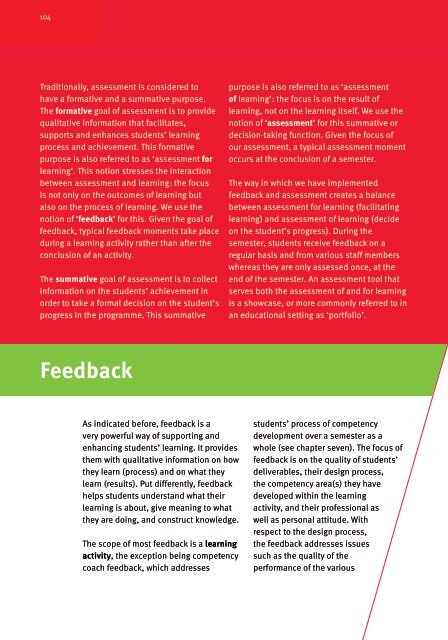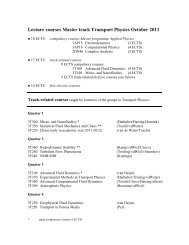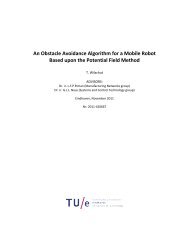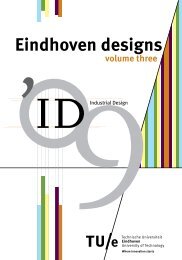Education guide 'Eindhoven designs' - Technische Universiteit ...
Education guide 'Eindhoven designs' - Technische Universiteit ...
Education guide 'Eindhoven designs' - Technische Universiteit ...
Create successful ePaper yourself
Turn your PDF publications into a flip-book with our unique Google optimized e-Paper software.
104<br />
Traditionally, assessment is considered to<br />
have a formative and a summative purpose.<br />
The formative goal of assessment is to provide<br />
qualitative information that facilitates,<br />
supports and enhances students’ learning<br />
process and achievement. This formative<br />
purpose is also referred to as ‘assessment for<br />
learning’. This notion stresses the interaction<br />
between assessment and learning: the focus<br />
is not only on the outcomes of learning but<br />
also on the process of learning. We use the<br />
notion of ‘feedback’ for this. Given the goal of<br />
feedback, typical feedback moments take place<br />
during a learning activity rather than after the<br />
conclusion of an activity.<br />
The summative goal of assessment is to collect<br />
information on the students’ achievement in<br />
order to take a formal decision on the student’s<br />
progress in the programme. This summative<br />
purpose is also referred to as ‘assessment<br />
of learning’: the focus is on the result of<br />
learning, not on the learning itself. We use the<br />
notion of ‘assessment’ for this summative or<br />
decision-taking function. Given the focus of<br />
our assessment, a typical assessment moment<br />
occurs at the conclusion of a semester.<br />
The way in which we have implemented<br />
feedback and assessment creates a balance<br />
between assessment for learning (facilitating<br />
learning) and assessment of learning (decide<br />
on the student’s progress). During the<br />
semester, students receive feedback on a<br />
regular basis and from various staff members<br />
whereas they are only assessed once, at the<br />
end of the semester. An assessment tool that<br />
serves both the assessment of and for learning<br />
is a showcase, or more commonly referred to in<br />
an educational setting as ‘portfolio’.<br />
Feedback<br />
As indicated before, feedback is a<br />
very powerful way of supporting and<br />
enhancing students’ learning. It provides<br />
them with qualitative information on how<br />
they learn (process) and on what they<br />
learn (results). Put differently, feedback<br />
helps students understand what their<br />
learning is about, give meaning to what<br />
they are doing, and construct knowledge.<br />
The scope of most feedback is a learning<br />
activity, the exception being competency<br />
coach feedback, which addresses<br />
students’ process of competency<br />
development over a semester as a<br />
whole (see chapter seven). The focus of<br />
feedback is on the quality of students’<br />
deliverables, their design process,<br />
the competency area(s) they have<br />
developed within the learning<br />
activity, and their professional as<br />
well as personal attitude. With<br />
respect to the design process,<br />
the feedback addresses issues<br />
such as the quality of the<br />
performance of the various

















